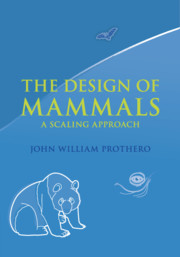Book contents
Part I - Background
Published online by Cambridge University Press: 05 November 2015
Summary

- Type
- Chapter
- Information
- The Design of MammalsA Scaling Approach, pp. 1 - 58Publisher: Cambridge University PressPrint publication year: 2015



